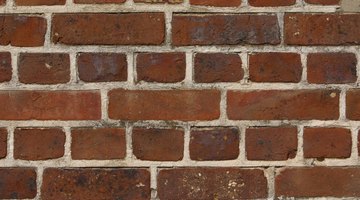What is the Best Way to Parge Brick Walls?
Parging is essentially covering a bricked area with one thin coating of mortar at a time. Whether you're choosing to parge an indoor or outdoor wall, for aesthetic or practical reasons, you should be able to achieve the results that you are looking for relatively quickly and easily.

Advantages
While covering brick isn't always desirable, the advantages of parging a brick wall may far outweigh the disadvantage of covering brick up. For example, if you don't like the look of your brick, you may choose to parge because parging hides the look of the brick completely. According to This Old House's website, if your indoor brick wall is collecting dust or giving off masonry particles, the smooth surface created by parging can stop that from happening. If your brick is deteriorating and has holes in it, parging can fill those holes and protect your building or structure from the elements. Haroutunian Masonry states that parging will also help you to avoid replacing your damaged brick in the future because the brick will be completely covered and protected.
Application
There aren't very many different ways to parge a brick wall, and the best way is the most direct way. To apply the mortar to the brick, you simply use a flat tool to put even coats of mortar on the brick wall, then wait for it to dry so that it will adhere properly. A tool that is designed to spread mortar, like a trowel, is a good choice because it will hold up to the material and help you to make sure that your coats are as even as possible.
However, if you're covering a large wall, it may be too hard to apply the mortar evenly, even with a trowel. In this case, Haroutunian Masonry advises that you may need to nail a sheet of galvanized mesh to the wall, which will help hold the mortar in place. Then, apply the mortar as evenly as possible, and before you apply the last coat of mortar, apply a "scratch coat" of strong cement and smooth with a sponge until it's even. This method should help you achieve an even covering, even over a large area.
The Drip Cap
- Parging is essentially covering a bricked area with one thin coating of mortar at a time.
- According to This Old House's website, if your indoor brick wall is collecting dust or giving off masonry particles, the smooth surface created by parging can stop that from happening.
- In this case, Haroutunian Masonry advises that you may need to nail a sheet of galvanized mesh to the wall, which will help hold the mortar in place.
References
Photo Credits
- Hemera Technologies/AbleStock.com/Getty Images
- Hemera Technologies/AbleStock.com/Getty Images
More Articles



